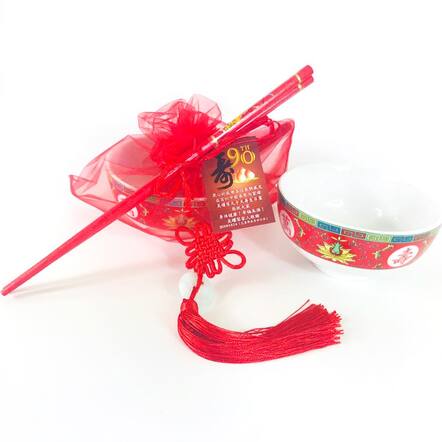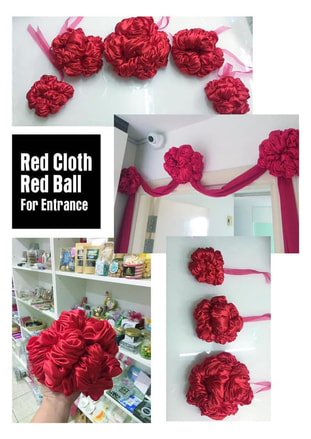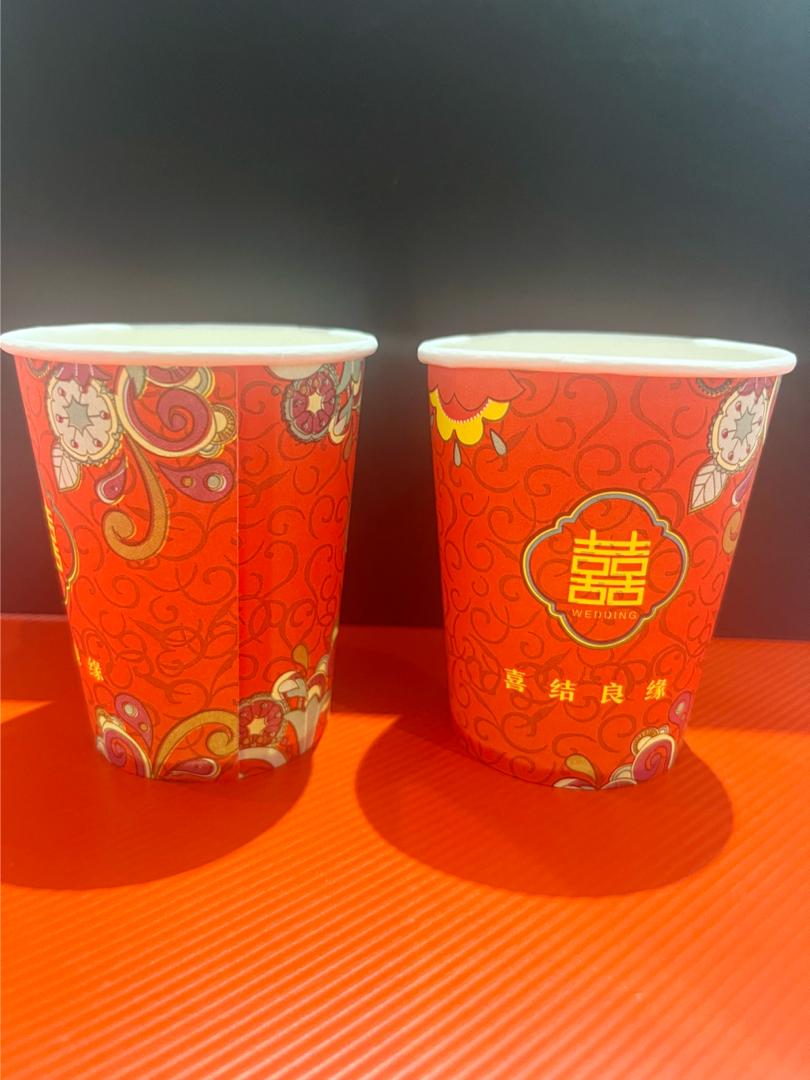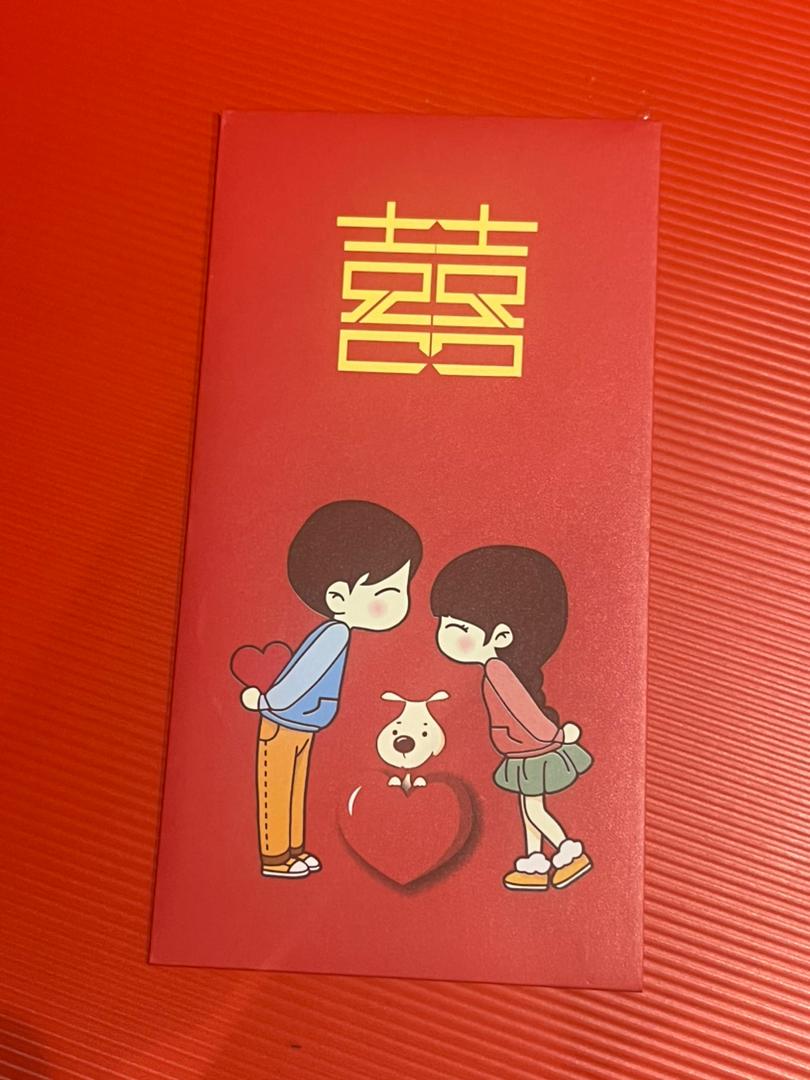Longevity Gifts & Red Cloth Decorations
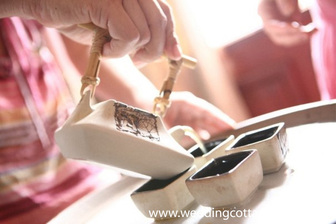
Traditional Chinese wedding goes back thousand of years ago and it is truly rich in tradition and culture. It doesn't matter whether we are living in a modern world, sometimes tradition takes precedence over current trend & styles and not to mention pleasing the folks back home.
With our range of accessories such as Tea Sets & Longevity Bowls to necessities like charcoal & pair of chickens (fake ones of course), you will find what you want here to make your Traditional Chinese wedding a reality and perhaps put a smile on the faces of your parents or grandparents.
Shop by Category
Please click the respective images below for further details on pricing and other info.
Contemporary Chinese Wedding Customs & Traditions
The Marriage Customs
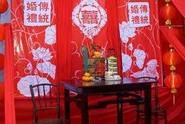
For the Chinese people, the purpose of marriage is to continue the ancestral line and to create alliances between two families. As the world changes, Chinese wedding traditions have evolved and changed as well. Unlike before, only a few traditions in weddings had survived the centuries and became a part of the modern day weddings. However, there are still families who wish to include traditional practices in their wedding plans.
In the ancient days, communication is done through letters which played a vital role in the betrothal and wedding process. There will be three (3) letters which will be sent during those times. The first is the "Request Letter" which serves as a confirmation of the formal arrangement of marriage. This is sent out by the groom's family to the bride's family along with the gifts which is known as "The Grand Gifts". The second letter is called the "Gift Letter which serves as a gift record list that describes the value of each gifts. The third one is known as "The Wedding Letter" which is given to the bride's family on the wedding day itself.
In other countries nowadays, the bride's family handles the expenses of the wedding because it is said to be the "bride's day". In some other countries, both the bride and the groom will take care of the wedding expenses. However, for Chinese wedding traditions , it is the "groom's day". This means the groom's family handles all the festivities before, during and after the wedding.
In the ancient days, communication is done through letters which played a vital role in the betrothal and wedding process. There will be three (3) letters which will be sent during those times. The first is the "Request Letter" which serves as a confirmation of the formal arrangement of marriage. This is sent out by the groom's family to the bride's family along with the gifts which is known as "The Grand Gifts". The second letter is called the "Gift Letter which serves as a gift record list that describes the value of each gifts. The third one is known as "The Wedding Letter" which is given to the bride's family on the wedding day itself.
In other countries nowadays, the bride's family handles the expenses of the wedding because it is said to be the "bride's day". In some other countries, both the bride and the groom will take care of the wedding expenses. However, for Chinese wedding traditions , it is the "groom's day". This means the groom's family handles all the festivities before, during and after the wedding.
The Wedding Date
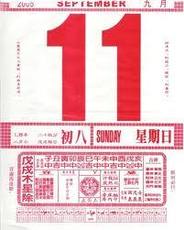
Couples who truly follow the Chinese traditions to the nines will be very picky when it comes to choosing the date for their wedding. The date ought to be a lucky one.
Most Chinese families will choose a wedding date which is according to the lunar calendar year. Aside from that, they also make sure that the moon and stars are properly aligned on the chosen date. It is also customary that the couple should marry on the half-hour rather than at the top hour of their wedding day. In this way, the hands of the clock are moving up instead of down. This is associated with the belief of Chinese wedding traditions that the couple could begin their lives on an upswing if that custom is followed.
The Colour Red
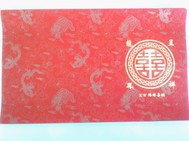
The colour red plays a vital role in the wedding festivities of the Chinese. Red is considered a bold and lucky colour. In addition to this, the colour signifies love, prosperity and happiness; therefore, everything is in red from wedding invitations, gift envelopes to the bride's wedding dress. It is also important that the symbol for double happiness is placed on Chinese invitations, envelopes and wedding decorations, and accessories.
The Wedding Bed
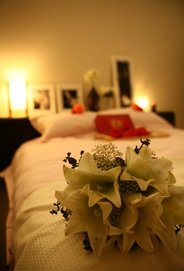
In traditional Chinese families, the parents of the couple usually provide a new bed complete with pillow cases, comforters, pillows and sheets. for the newly weds.
The night before the wedding, the groom is required to sleep on the bed and a young nephew will have to jump up and down the bed to give good luck to the couple. It is said that this practice also gives hope on the fertility of the couple and will make them produce an heir soon.
The Tea Ceremony
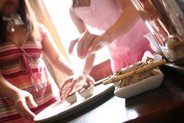
Chinese Wedding Tea ceremony is performed in every Chinese wedding. It is a tradition that has been passed down from generation to generation and it is also being practice by Chinese of the Christian faith and those of mixed marriages. Tea is used in Chinese wedding ceremonies mainly because Tea is China's national drink and it symbolizes respect.
Using tea in weddings is practical because not everybody can drink alcohol. The tea ceremony is considered a significant event in a Chinese wedding. The bride is formally introduced to the family of the groom through a Chinese wedding tea ceremony. This takes place on the wedding day itself when all of the members of the family are present.
The History
According to a legend, tea was accidentally invented and discovered by the Chinese Emperor Shen Nong in 2737 B.C. It was said that Emperor Shen Nong was a herbalist and a scholar. He firmly believed that drinking boiled water may lead to good health. One summer day, he was on his way to visit a distant region when he stopped to rest and told his servants to boil his water. There was a camellia bush behind and dried leaves began to fall. Leaves fell directly into the emperor's boiling water. The aroma was pleasing that the emperor decided to taste it. Initially, he found it to be refreshing. He then acknowledged that tea gives strength and is medicinal. Around 300 A.D., the tea has become a daily drink to the Chinese.
When to Serve
The tea ceremony for the groom's family is usually done in the morning while for the family of the bride; it is done in the afternoon when the bride and groom have completed the bride's home visit.
There is one rule which is being applied during a Chinese wedding tea ceremony. The bride should be on the left side and the groom on the right. The people being served will have to sit on chairs while the newly weds kneel or stand as they serve them tea.
The order of serving tea is usually done by seniority. The parents will be served first, then the grandparents, grand uncles and grand aunties, uncles and aunties, elder brothers and sisters and then, elder cousins.
On the wedding day, the bride serves tea to both her parents at home right before the groom arrives. This act is in respect and gratitude to her parents for all the years of love and care.
Normally the groom's sister or a relative will assist in pouring the tea and washing the cups as well. In a traditional Chinese family, the young couple must kneel down while serving the tea. If a living relative of the elder couple is not around, the other will drink on behalf of the absent spouse. Tea is not served for a deceased spouse.
After the drinking of the tea, gifts for the bride and groom will be presented. Gifts are usually in forms of red envelopes and contain money or jewelry. Some relatives prefer that the couple use the jewelry immediately. Unmarried elder siblings do not necessarily present the couples with gifts and tea. To the younger siblings and cousins who help them serve tea the couple will present to them gifts afterwards. The helpers are usually women who are blessed with a happy marriage or abundant wealth. Normally, these women are chosen by a Chinese fortune teller or the bride's mother. These helpers also receive lucky red envelopes filled with money, called "Li Shi", from those being served. These envelopes are placed on the platter where the tea cups are placed.
Using tea in weddings is practical because not everybody can drink alcohol. The tea ceremony is considered a significant event in a Chinese wedding. The bride is formally introduced to the family of the groom through a Chinese wedding tea ceremony. This takes place on the wedding day itself when all of the members of the family are present.
The History
According to a legend, tea was accidentally invented and discovered by the Chinese Emperor Shen Nong in 2737 B.C. It was said that Emperor Shen Nong was a herbalist and a scholar. He firmly believed that drinking boiled water may lead to good health. One summer day, he was on his way to visit a distant region when he stopped to rest and told his servants to boil his water. There was a camellia bush behind and dried leaves began to fall. Leaves fell directly into the emperor's boiling water. The aroma was pleasing that the emperor decided to taste it. Initially, he found it to be refreshing. He then acknowledged that tea gives strength and is medicinal. Around 300 A.D., the tea has become a daily drink to the Chinese.
When to Serve
The tea ceremony for the groom's family is usually done in the morning while for the family of the bride; it is done in the afternoon when the bride and groom have completed the bride's home visit.
There is one rule which is being applied during a Chinese wedding tea ceremony. The bride should be on the left side and the groom on the right. The people being served will have to sit on chairs while the newly weds kneel or stand as they serve them tea.
The order of serving tea is usually done by seniority. The parents will be served first, then the grandparents, grand uncles and grand aunties, uncles and aunties, elder brothers and sisters and then, elder cousins.
On the wedding day, the bride serves tea to both her parents at home right before the groom arrives. This act is in respect and gratitude to her parents for all the years of love and care.
Normally the groom's sister or a relative will assist in pouring the tea and washing the cups as well. In a traditional Chinese family, the young couple must kneel down while serving the tea. If a living relative of the elder couple is not around, the other will drink on behalf of the absent spouse. Tea is not served for a deceased spouse.
After the drinking of the tea, gifts for the bride and groom will be presented. Gifts are usually in forms of red envelopes and contain money or jewelry. Some relatives prefer that the couple use the jewelry immediately. Unmarried elder siblings do not necessarily present the couples with gifts and tea. To the younger siblings and cousins who help them serve tea the couple will present to them gifts afterwards. The helpers are usually women who are blessed with a happy marriage or abundant wealth. Normally, these women are chosen by a Chinese fortune teller or the bride's mother. These helpers also receive lucky red envelopes filled with money, called "Li Shi", from those being served. These envelopes are placed on the platter where the tea cups are placed.
The Tea Set
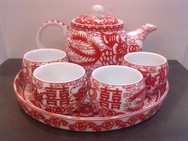
The Chinese wedding tea set used for the tea ceremony is kept as a wedding present. The bride's parents will pay for the tea set which is a part of the dowry. The Chinese tea set is a meaningful keepsake for the couple. In the future when the daughter of the bride gets married, the tea set will be used again. Tea sets are available in western and Chinese styles. Popular designs for tea sets include double happiness designs, phoenix, dragons, peony or flower designs and gold trimmings as well.
Any sweet tea that symbolizes sweetness in the new union can be used in a wedding tea ceremony. Lotus seeds and red dates tea symbolizes that the newly wed couple will bear children immediately. Longans and red dates tea symbolizes the wish for bearing male children.
Any sweet tea that symbolizes sweetness in the new union can be used in a wedding tea ceremony. Lotus seeds and red dates tea symbolizes that the newly wed couple will bear children immediately. Longans and red dates tea symbolizes the wish for bearing male children.
The Big Day
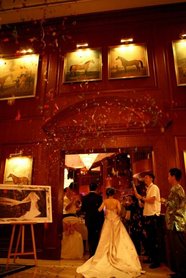
There will be three different dresses for the bride. The white dress with veil is worn during the wedding ceremony. The second wedding dress, a traditional Chinese wedding dress is used at the reception/banquet. The last dress is called the bride's going away dress. This dress is worn before the bride leaves the banquet.
The feast or wedding banquet is an important part during the wedding. Wedding banquets are held to thank family and friends for the kindness they have shown to them throughout the years. Most feasts will serve a twelve course meal including delicacies like roasted pig and shark fin soup. Sometimes fried rice and abalone will also be on the menu.
A post wedding ritual for Chinese wedding traditions happens after the day of the wedding. The bride should wake up early to honour her ancestors. On this day, the bride is formally introduced to the groom's family, relatives and friends. Older relatives will give her small tokens. Three days after the wedding, the bride will visit her family where she is welcomed and received as a guest.
Source: wikipedia

